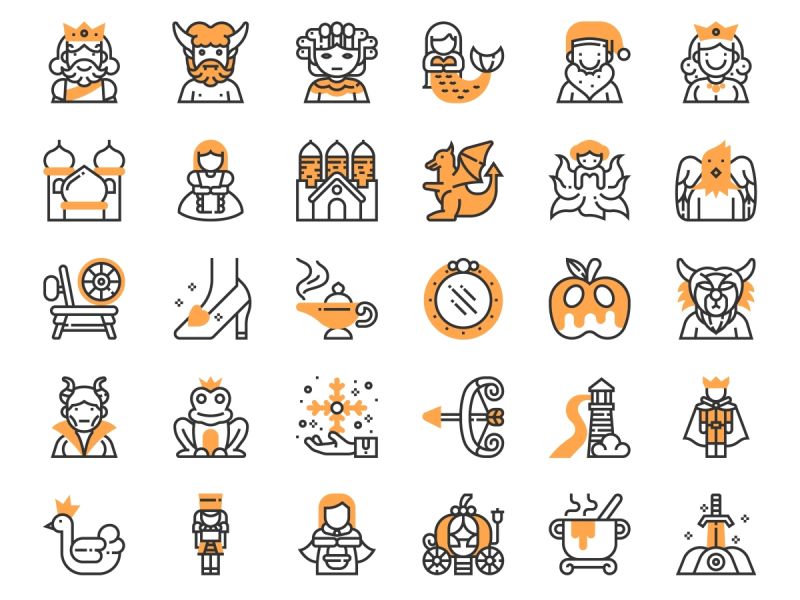Just for Fun: It’s All A Bit Grimm; Join Us On A Journey Through The World Of Fairy Tales

Today is the anniversary of the birth of Wilhelm Carl Grimm (one of the Brothers Grimm). So today, we’re celebrating the world of fairy tales. Plus, find out how you can read and share your own tales about Stikins ® name labels.
Fascinating Tales About Fairy Tales
Fairy tales are so old that no one knows their exact origins. The tales we know today probably evolved from ancient stories that appeared in multiple cultures around the world. These were oral folk tales, which means they were passed on by being spoken aloud or performed. Some surviving examples are thought to be 4-5,000 years old. Over time, people started to write down their tales. One of the oldest examples was written in Ancient Egypt around 1300 BC. The oldest version of Cinderella was written in China in 860CE.
For centuries, fairy tales have been told in written and spoken form – with characters, motifs, and plots shared freely as the tales were revised and retold to suit new audiences. Today, there are thousands of versions of the same tales.
Early tales were told mainly for adult audiences. In the 19th century there was a shift towards family friendly tales and by the 20th century fairy tales were firmly associated with children’s literature.
Most of the fairy tales we know today come from a handful of collections. Perhaps the best known are those by French author Charles Perrault and German writers Jacob and Wilhelm Grimm (the Brothers Grimm).
Perrault’s collection, Tales and Stories of the Past, with Morals (or Mother Goose Tales), was published in 1697. It included versions of Little Red Riding Hood, Cinderella, Puss In Boots, Sleeping Beauty, and Bluebeard. The Brothers Grimm published Children’s and Household Tales in 1812. By 1857, there were seven editions with various revisions, additions, and subtractions. The first edition had two volumes of 86 and 70 tales; the final edition contained 210 tales.
Both collections contained versions of existing folk tales. The Grimm collection even included versions of some of Perrault’s tales. Both collections also shared a common source – women.
The Grimm Brothers invited people to tell them folk tales; most were middle-class or aristocratic female acquaintances. Perrault was probably influenced by a 17th century trend in women’s salons. Aristocratic (and educated) women gathered in their living rooms (salons) to discuss topics of interest. These salons often included a parlour game, where each member retold an old folk tale. These retold tales were performed to adult audiences (just as Perrault’s tales were told at the Court of Versailles) but were often inspired by tales told by servants or the lower classes to children.
The name “fairy tale” came from these salons when Marie-Catherine d’Aulnoy described her tales as “conte de fées”. The traditional opening, “once upon a time”, is much older. Used since at least 1380, it became part of fairy tales (and other stories) in the 17th century. Some folklorists prefer the German term Märchen or “wonder tale” to describe fairy tales. This accounts for fairy tales that don’t actually contain fairies (but contain wonderful things like magic).
Fairy tales appear all over the world, throughout time, in many varied cultures. These tales often share characters, plots, and motifs. One theory suggests these similar stories share the same origin and were carried from person to person, place to place, over years. Another says fairy tales stem from common human experiences, which is why different groups of people in different places and different times tell similar tales.
Tell Us A Tale – About Your Experiences With Stikins ® Name Labels
We love hearing from our customers and invite all of our customers to leave us a review. Our customers tell us their individual stories about how they use their name labels. We also get to hear stories about some of the more unusual uses you've discovered for our labels!
You can read all of our reviews (or tales about Stikins ® labels) on our Reviews page. Currently we have over 11,400 reviews – with over 11,000 of these (98%) being four or five star reviews.
When you order name labels, we’ll send you two follow up emails inviting you to review your name labels. We send them out two weeks and one month after you place your order. You can also leave us a review at any time by clicking on the Write A Review button on the Reviews page.
